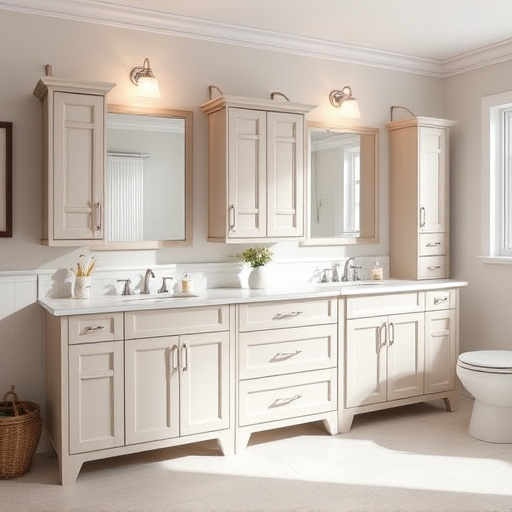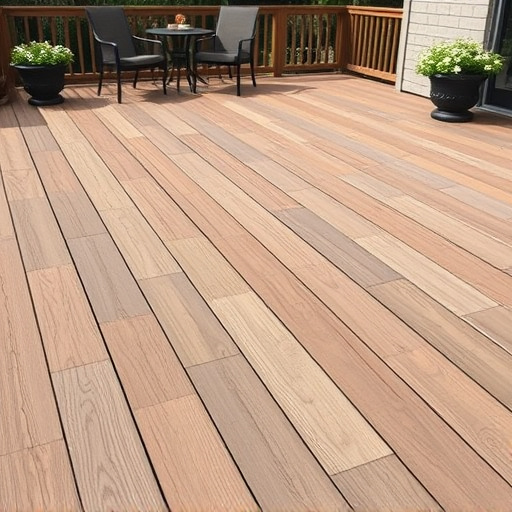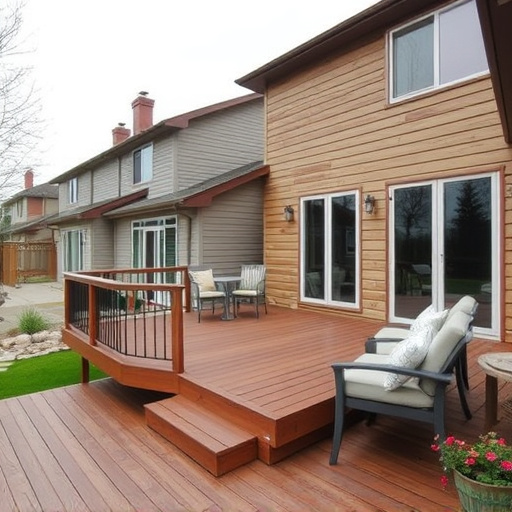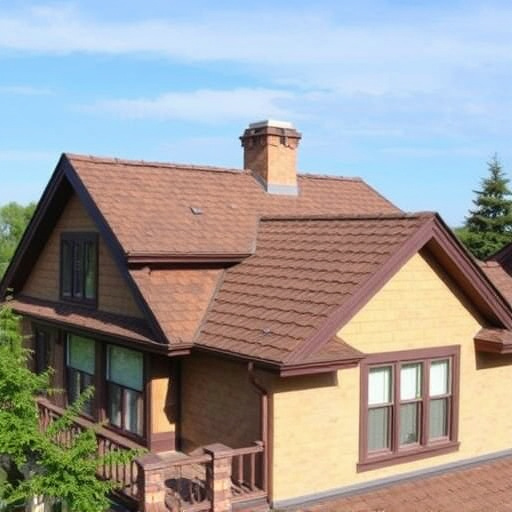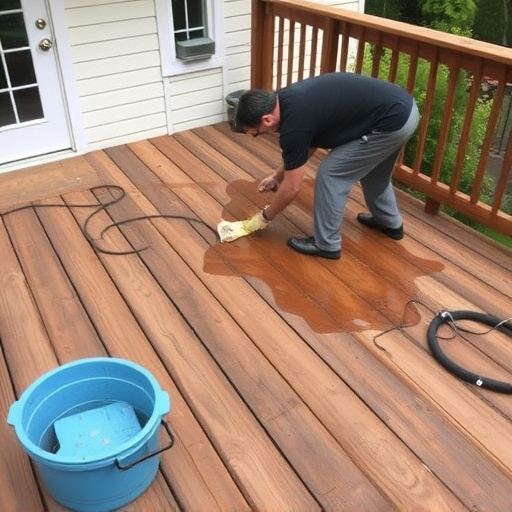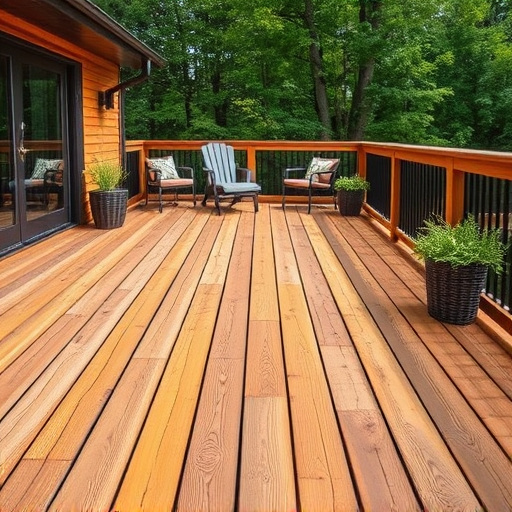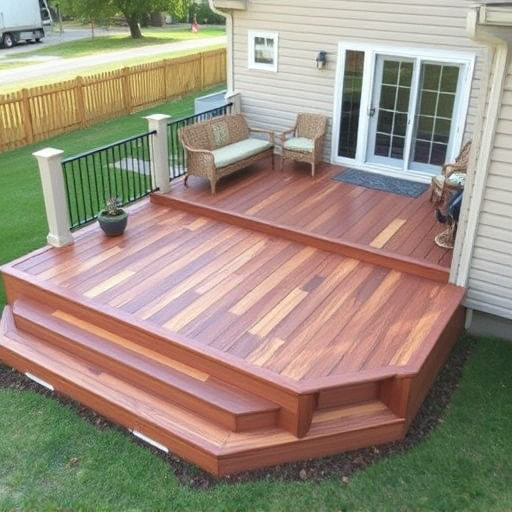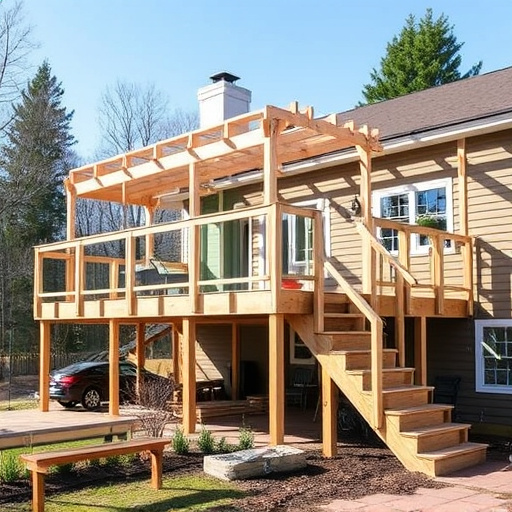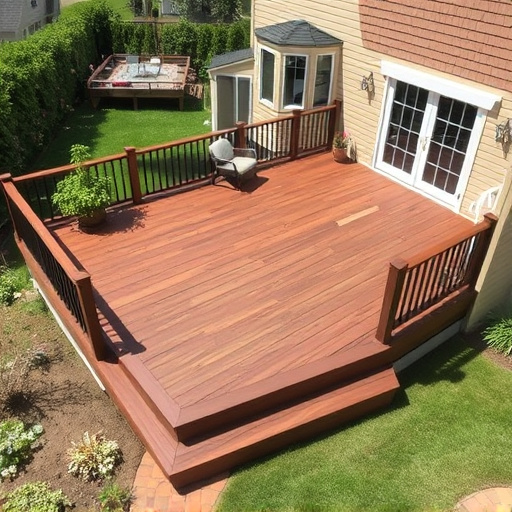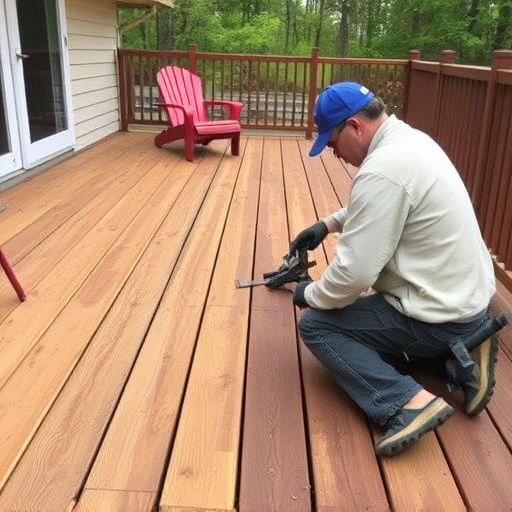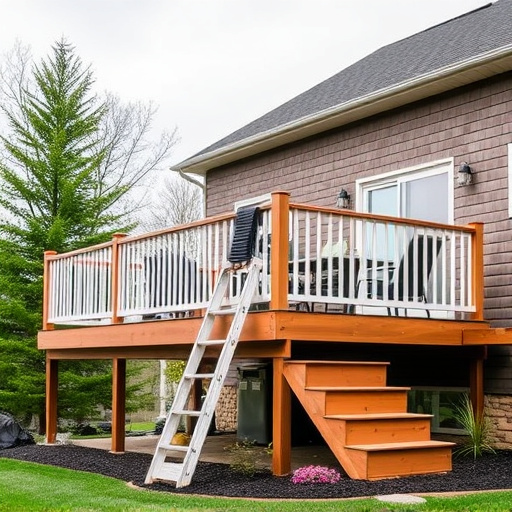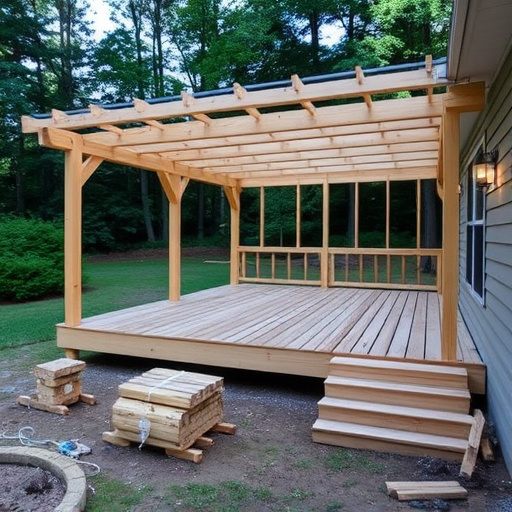Choosing the right deck railing is key for both safety and aesthetics. Opt for transparent or semi-transparent materials like glass or wire rope for unobstructed views and natural light, aligning with your home's exterior style. Consider durable options like aluminum or stainless steel in storm-prone areas for long-lasting protection. Material choices range from traditional wood to modern composite and metal, each offering unique benefits; the best option depends on climate, budget, and desired visual impact. Railing designs, from glass to cable, influence safety and viewiness; integrating professional siding and roofing services can elevate the overall outdoor living experience.
Unobstructed views are a key element in transforming your outdoor space into an inviting, scenic oasis. The right deck railing design can maximize natural beauty while ensuring safety. This article explores how to choose the best materials—from glass and metal to wood and cable—to create railings that enhance aesthetics without blocking your view. We delve into designs that prioritize functionality, from balancing form and safety to incorporating innovative elements like terraces, natural accents, and smart technology, providing endless inspiration for your next deck project.
- Choosing the Right Material for Unobstructed Views
- – Exploring popular deck railing materials
- – Advantages and disadvantages of glass, metal, wood, and cable railings
Choosing the Right Material for Unobstructed Views
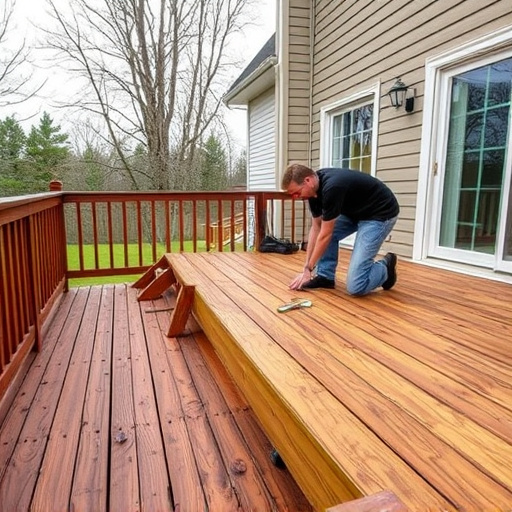
When selecting materials for your deck railing, prioritizing unobstructed views is paramount. Opting for transparent or semi-transparent options like glass or wire rope allows natural light to filter through while maintaining a clear line of sight over the surrounding landscape. This not only enhances the aesthetic appeal but also creates a sense of openness and connection with the outdoor environment.
Consider the compatibility of your chosen deck railing material with your home’s residential siding and overall home exterior services. Storm-resistant materials, such as high-quality aluminum or stainless steel, are ideal for areas prone to severe weather, ensuring longevity and minimizing the need for frequent storm damage repair.
– Exploring popular deck railing materials
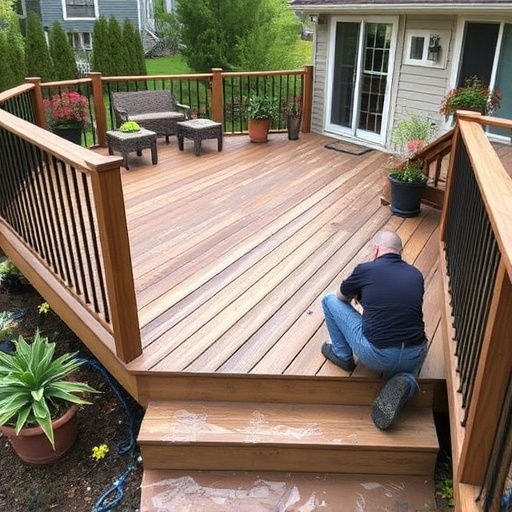
When it comes to deck railing designs, the materials you choose play a pivotal role in defining both functionality and aesthetics. Popular options range from traditional wood, known for its natural beauty and warmth, to modern composite materials that offer durability and low-maintenance benefits. Metal railings, particularly aluminum and stainless steel, are gaining popularity due to their strength, corrosion resistance, and customizable designs. Each material has its unique visual appeal, fitting various architectural styles from rustic to contemporary.
For residential siding, wood remains a favorite choice for its versatility and ability to blend seamlessly with natural outdoor environments. In contrast, commercial roofing applications often demand sturdier alternatives like metal railings, ensuring safety while maintaining aesthetic integrity. Ultimately, the right deck railing material selection depends on factors such as climate, budget, and desired visual impact, allowing homeowners and designers to maximize outdoor views while adhering to safety standards.
– Advantages and disadvantages of glass, metal, wood, and cable railings
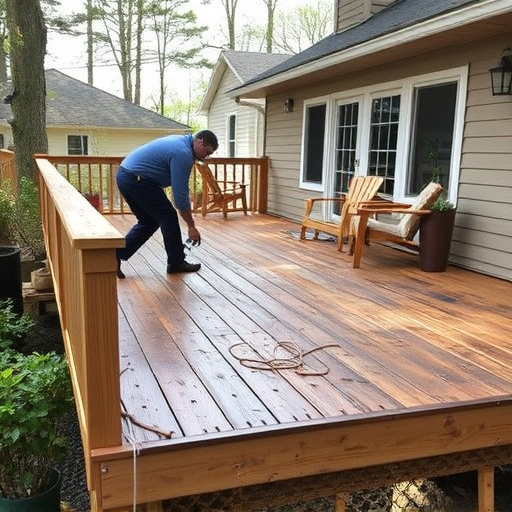
When it comes to deck railing designs, materials play a significant role in shaping both aesthetics and functionality. Glass railings offer unparalleled views, providing a seamless connection between indoor and outdoor spaces, ideal for those seeking an open, airy feel. However, they may not be suitable for high traffic areas due to their fragile nature and the potential for breakage, requiring additional safety measures like tempering or wire meshing.
Metal railings, often made of aluminum or steel, are durable and low-maintenance, making them a popular choice for both residential and commercial properties. They can withstand harsh weather conditions and offer various design options, from sleek, modern lines to elaborate, decorative patterns. Yet, metal might not be as visually appealing as other materials and can conduct heat, potentially becoming uncomfortably warm during hot summers. Wood railings exude natural beauty and warmth, blending seamlessly with outdoor environments. They’re easy to install and can be customized for different styles. However, wood requires regular maintenance like painting or staining to prevent rot and insect infestation, making it a higher-effort option compared to other materials. Cable railings provide a modern, sleek look, offering both strength and flexibility in design. They allow for panoramic views while ensuring safety with minimal visual obstructions. Professional siding services and residential roofing can enhance the overall appeal of your deck railing, creating an integrated outdoor living space that’s both functional and aesthetically pleasing, complementing your home’s exterior features, including roofing services designed to withstand local climate conditions.
When it comes to maximizing outdoor views with a deck railing, the choice of material is key. Each option—from glass and metal to wood and cable—offers unique advantages and aesthetic appeal. By considering factors like durability, maintenance, and visual impact, you can select a deck railing design that not only enhances your outdoor space but also preserves breathtaking vistas. Incorporate these designs thoughtfully to create a harmonious blend of functionality and aesthetics, ensuring your deck becomes a favorite gathering place for years to come.

